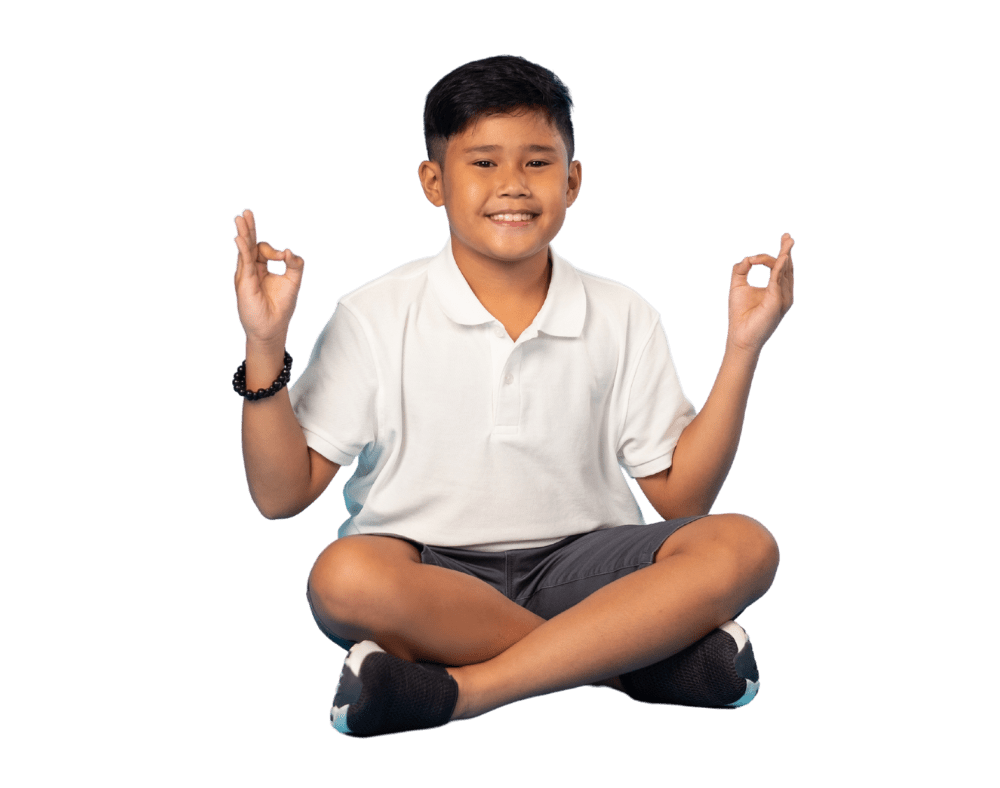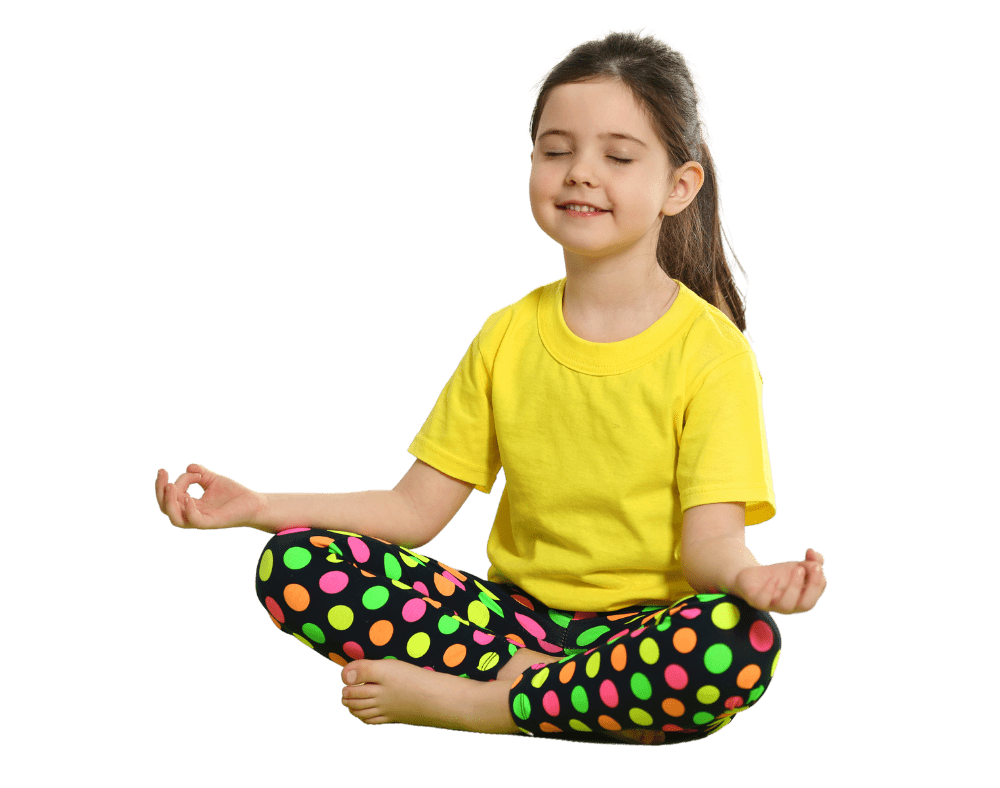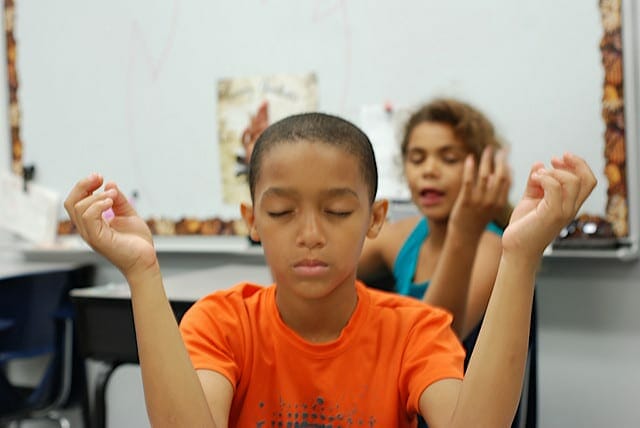 There has been plenty of research over the years on the benefits of brain breaks for children. Whether it is in a traditional classroom, a homeschool classroom, or just recognizing that your child needs to change gears to calm down, refocus, or release anxiety within the home, brain breaks have been found to improve focus and positively impact learning. Why? Because of the connection between the cerebellum, our motor control center, and the rest of the brain, especially parts related to memory, attention and spatial perception. As cited in Teaching with the Brain in Mind, by Eric Jensen, movement of our body is directly related to cognition. Brain breaks that incorporate physical movement help the left and right hemispheres of the brain work together. Another benefit of brain breaks is to uplift emotions. Changing positions, going from sitting to standing, or more effectively, getting a little exercise from taking a walk, dancing, or doing yoga, has a direct impact on our emotional state.
There has been plenty of research over the years on the benefits of brain breaks for children. Whether it is in a traditional classroom, a homeschool classroom, or just recognizing that your child needs to change gears to calm down, refocus, or release anxiety within the home, brain breaks have been found to improve focus and positively impact learning. Why? Because of the connection between the cerebellum, our motor control center, and the rest of the brain, especially parts related to memory, attention and spatial perception. As cited in Teaching with the Brain in Mind, by Eric Jensen, movement of our body is directly related to cognition. Brain breaks that incorporate physical movement help the left and right hemispheres of the brain work together. Another benefit of brain breaks is to uplift emotions. Changing positions, going from sitting to standing, or more effectively, getting a little exercise from taking a walk, dancing, or doing yoga, has a direct impact on our emotional state.
It is suggested that brain breaks that involve physical or kinesthetic movements be incorporated into a classroom routine every half hour. They can be very brief or more involved. Set up behavior expectations prior to initiating these activities: everyone participates, respect the personal space of other classmates, and state the expectation immediately following the brain break. A timer, song, or some other signal can be used to indicate the start and end of the brain break. It should not interrupt the flow of the classroom routine, rather illicit better concentration and focus following the physical activity.
There are a multitude of brain break activities that can be utilized in a classroom, from doing simple activities that cross the body’s midline, participating in interactive online programs, playing games that get students to move from one side of the classroom to the other based on their answers to questions, or doing yoga poses to stretch and get the blood flowing. Activities can also tie into current academic themes or stories.
The following are a few brain break activities that can be easily woven into the school 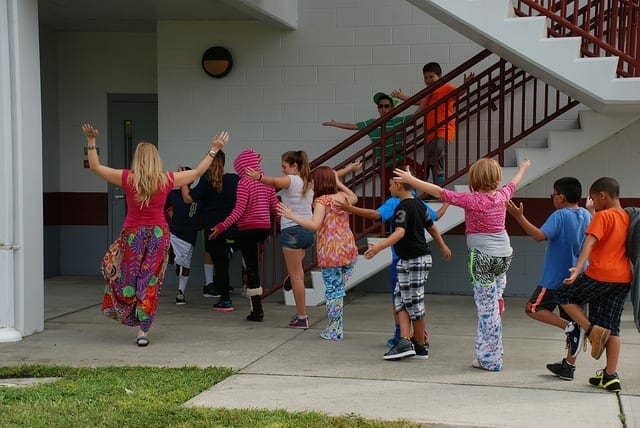 day:
day:
1. Fill a jar with popsicle sticks that have various yoga poses written on them such as: tree, mountain, moon, rag doll, cat/cow, forward fold, pretzel pose, etc. Students take turns pulling a popsicle stick and modeling the pose for the classmates, who follow along.
2. Make it a transition activity. If students are following a center schedule, post a list of physical activities they are to choose from between each center. Designate a place in the room where these activities can take place. “Go to the carpet and do one of the following activities: 15 jumping jacks, hold a plank to the count of 30, take three big breaths and give yourself a big hug holding it for 5-10 seconds, or zombie walk/monster walk/tip-toe to your next center.
3. Following a read aloud have students act out events from the story through yoga poses. Picture books about animals are especially easy to adapt for this activity. Books by Eric Carle, Karma Wilson, Margaret Wise Brown & Kerry Lee MacLean all have great stories that can not only extend into a quick brain break but many also teach about emotions and social skills that often need to be reinforced to children.
4. GoNoodle.com is an excellent resource that offers everything from track and field training (in place of course) to yoga to dancing to child-friendly songs.
5. The breath, or pranayama, is an important part of yoga. Purposeful breathing provides more oxygen to the cells which in turn can have a calming effect on the body. 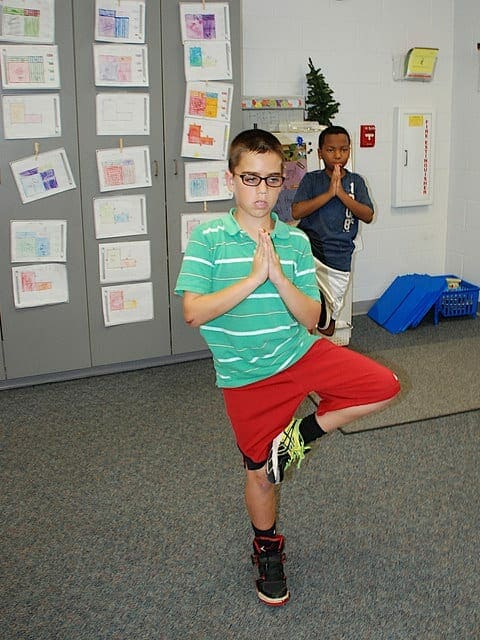 Incorporate breathing into the brain break by having students lay down on the floor and blow a pompom, feather, or even pencil to a partner. Again, set up expectations so the breaths are slow and purposeful, not too fast and personal space of their partner is respected.
Incorporate breathing into the brain break by having students lay down on the floor and blow a pompom, feather, or even pencil to a partner. Again, set up expectations so the breaths are slow and purposeful, not too fast and personal space of their partner is respected.
Have fun with it! Your students will benefit from the movement and the emotional and physiological effects it provides. For more activities, consider taking the online course, KAY in the Classroom.

